Is it better to neglect your garden?
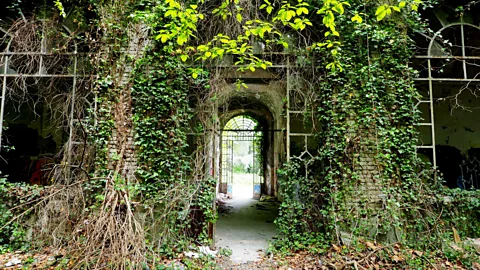 Getty Images
Getty ImagesGardens packed with blooming flowers or adorned with neat insect hotels, are extremely popular. But are these highly curated creations actually helpful – or would it be better to allow nature to take its own course?
When she's not leading garden-based learning at Cornell University's School of Integrative Plant Science in New York, Ashley Louise Miller Helmholdt is a mum who likes to garden. She has a few different gardens on her property, as well as a patch of lawn for her son to play on where clover occasionally crops up. "I have a little plot that's just wild," she says. "I have a native plant and pollinator garden. So I have a little bit of everything."
Miller Helmholdt doesn't consider herself a master gardener by any means. Still, she has "a bit of background in this" and knows that a biodiverse, native plant-based garden, even with some so-called "weeds" in it, bolsters the biodiversity in her local ecosystem.
There's a lot of emphasis today on creating gardens designed to pollinators. Pollinator populations have been declining precipitously worldwide since the 1990s due to habitat loss, pesticide use, and climate change. The US Western Monarch butterfly population, for example, dropped to just 9,119 individuals in 2024, the second lowest count since records began in 1997. Expanding lawns and a lack of native flowers in urban and suburban areas are doing them a disservice.
Even a small, pollinator-friendly wildlife garden on your property can help revive pollinator populations in your area. "Gardens, backyards, community gardens, school yards, parks, we have this incredible mosaic of green spaces scattered across the country that can help bring habitat back into our neighbourhoods and communities," says Matthew Shepherd, director of outreach and education for the Xerces Society for Invertebrate Conservation in Portland, Oregon.
But what's the best way to go about this? As beautiful, pollinator-friendly gardens pop up across the globe, with neat "bee hotels" attached to fences and immaculate patchworks of wildflowers, some experts are questioning whether this is truly what wildlife needs – or if a bit more neglect could be more environmentally ive in the long run. The leaves of many so-called weeds are food for insects at different life stages, while heaps of messy debris provide vital habitats – should we really clear these things away?
A new approach
As it happens, creating a wildlife garden doesn't just mean planting flowers that provide nectar and pollen. A true wildlife haven offers a year-round habitat for local species, and this may translate to letting areas of your green space get a little messy.
"There's new excitement about ing the full annual cycle of insects," says Desirée Narango, a conservation biologist at the Vermont Center for Ecostudies, Vermont. This doesn't just mean the plants that they need for food, for example, but also where they spend the winter, she says. "We want to everything that these insects need to have sustainable populations, because then they can be more resilient against the myriad of other things that they have to deal with out there," she says.
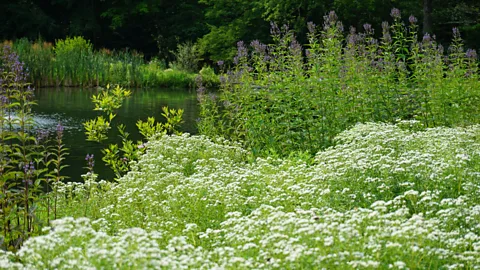 Desirée Narango
Desirée NarangoNarango lives in rural Vermont, and her entire backyard is a meadow of native plants that basically takes care of itself. "We have a beautiful, pristine habitat all around us that's sourcing a lot of really amazing native plants, and so I don't have to do anything, because they're dispersing into that area on their own," she explains. She does have to remove dandelions from time to time to keep the non-native, invasive species from getting a foothold, but she picks her battles.
"There is evidence from North America and Europe that native plants a greater variety of species than non-native plants," says Shepherd. Having some non-native plants in the mix can also pollinators by increasing the nectar supply, as long as they're kept in check (invasive species have a proclivity for taking over and wiping out less hardy native species).
Narango's scenario, however, is not what you'll find in the typically suburban backyard where turf often reigns supreme. If you're hoping to create a wildlife garden in this environment, you'll likely need to remove what's there and start from scratch to give native plants a chance to thrive, says Miller Helmholdt.
"If you're starting from scratch, you'll be getting rid of some of those weed seeds in the seed bank that aren't going to be great." She recommends tilling the soil a few times to remove weed seeds in the soil so they don't all germinate and compete with the native species you plant.
A moment for weeds
Despite their reputation, so-called “weeds” in a garden or lawn serve a purpose in ing pollinators. A 2016 study found that increasing the amount of white clover in the UK would help significantly with increasing the amount of nectar available to pollinators. Meanwhile, stinging nettles are known to over 40 species of insects in their native range across Europe, parts of Asia and North Africa. Considering that, it might seem counterintuitive to constantly remove these plants if you're trying to promote biodiversity. But Narango says there's a catch.
Outside their native range, Narango explains that so-called weeds such as clover and dandelions mostly just generalist species of insect – pollinators which aren't picky about which flowers they visit. "…they're not really ing specialist species, vulnerable species, or species of high conservation concern. That's where you need the native [plant] species," she says.
Non-native plants, invasive species, and weeds
"Alien", or non-native plants are those which are not naturally found in a particular area. Sometimes, they are so successful that they can out-compete the native species there, leading them to take over and become dominant. At this point, they are considered "invasive". On the other hand, so-called "weeds" are more loosely defined – any plant, whether native or not, that is not wanted in a particular location can be called a weed.
That said, in some areas, white clover is native and therefore not considered invasive.
"If you live in an area where clover is native, it's a very different story than if you're in an area where it's non-native," says Narango.
You don't need to go entirely native
Turning your entire plot into a wildlife garden is a boon for biodiversity, but it's not an attainable goal for everyone. According to a recently published study Narango co-authored, converting at least 70% still makes a notable difference. It considered the impacts native and non-native landscaping have on food availability for birds (largely insects), and found non-native plants do reduce insect count, which ultimately impacts bird population growth. But there's a silver lining: "We were able to identify a threshold so that we could provide targeted [non-native plant] goalposts for people to strive for," says Narango. The researchers found that if more than 70% of your garden's biomass is native, that allows birds to sustain their populations.
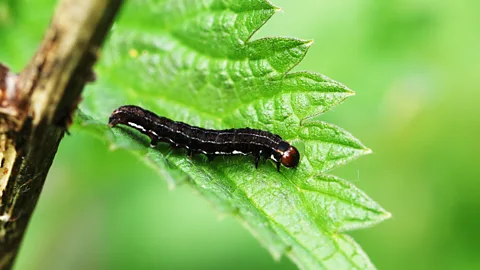 Getty Images
Getty ImagesDoing less with your garden and letting things get a little messy, especially during strategic times of year, such as early spring, can help to protect emerging wildlife. For example, the international campaign No Mow May encourages people [in the Northern hemisphere] to stop mowing for the entire month of May, to allow plants to bloom and set seed without being flattened or decapitated.
However, Susannah Lerman, a research ecologist for the United States Department of Agriculture's Forest Service Northern Research Station and adjunct professor at the University of Massacresetts in Amherst, US, prefers the term "Slow Mow Summer". Her research on the effects of mowing frequency found that mowing less in general leads to more flowering plants and therefore more bees.
"A lot of [pollinators] are ground-nesting bees, so actually not mowing until April or May is a good thing, because it allows them to come out of their winter nesting grounds. So, there are benefits to a little bit of neglect," says Miller Helmholdt.
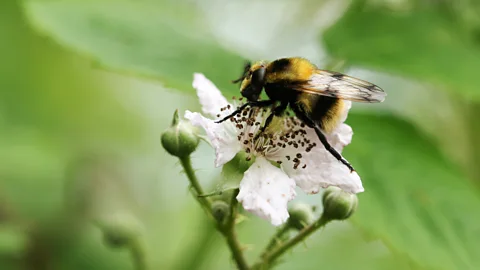 Getty Images
Getty ImagesWhat if you just do nothing?
There are benefits and challenges to letting your garden go completely.
For one thing, in the absence of human intervention, the most aggressive, non-native species have an opportunity to take over. "When you have hyper-aggressive plants, that's the enemy of diversity, because they outcompete a lot of what could have been there," says Larry Weaner, an ecological landscape designer and founder of Larry Weaner Landscape Associates Designs, based in Pennsylvania. What you're left with is a more homogenised garden, which is not great for native pollinators who might be struggling to sustain their population. "You might get an overabundance of some weedy species that might look like they're good for bees, but in reality, are not doing very much," says Narango.
Shepherd says the result could be a "tangled mess" that "will provide some food and shelter, but I'd expect its overall value for wildlife will be less than if it were a tended plot ing a greater diversity of native plants."
However, there are totally neglected landscapes that have seen wildlife proliferation. Some so-called brownfield sites – areas of land that previously had a commercial or industrial use – such as defunct and derelict factory properties, are now home to endangered species in the UK. This includes the distinguished jumping spider, which enjoys salty, sandy environments, and is found at just two locations – both brownfield sites near London.
Though brownfield sites were never managed gardens, they demonstrate how, when properties are just left, "there were lots of opportunities for plant communities to reoccupy the sites," says Shepherd. Similarly in the US, Detroit's industrial decline led to a multitude of abandoned sites that now teem with wildlife.
While experts recommend doing a little less mowing and pruning in the spring and summer, it's also recommended to let some things pile up in the autumn, specifically leaves. The Xerces Society for Invertebrate Conservation, a non-profit organisation focused on the conservation of invertebrates, promotes an initiative called Leave the Leaves that advocates for this to protect insects that overwinter on your property.
"[You shouldn't] take the rake and the leaf blower and cut down all the dead things, especially under trees, and in your meadow areas, because a lot of insects are overwintering in those dead stems and in that leaf litter," cautions Narango.
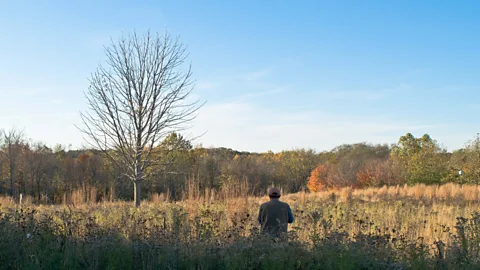 Larry Weaner
Larry WeanerTake the luna moth. In its caterpillar stage, the insect drops from a tree in the hope of finding a safe place to pupate. A leaf pile or a small native garden can provide this "soft landing", a term coined by the pollinator conservationist Heather Holm.
"If all [the caterpillar] finds is compacted soil and lawn, it can't do anything. It's dead. It didn't matter that you even planted the tree [as far as the insect is concerned]," says Narango.
Meanwhile, other pollinators benefit from slightly different forms of neglect.
"The majority of bees nest underground, so leaving areas of bare or unmulched soil [without a covering of compost, leaf mould or wood chippings to suppress weeds or retain moisture] is important," says Lerman. "Other species are pith-nesters, so leaving dead plants in the yard is beneficial since bees (and wasps) either excavate or use existing tunnels in the spongy inner part of stems. In general, less intensive management of our yards can benefit a whole suite of species," she says.
Starting a pollinator garden
If you're ready to start a pollinator garden, Narango suggests first taking a look around your property and seeing what native species you already have.
Narango recommends using a plant-identifying app to take photos of plants and insects to learn about the present ecosystem. Once you get a sense of what's there, she recommends going to a plant nursery specialising in selling native plants. "Many of these nurseries also sell plants that they can guarantee don't have systemic pesticides," she notes.
If you're specifically hoping to attract native bees, Miller Helmholdt explains that you might want to research which flowering plants the native bees in your area like the most. "In New York, [for example], there are over 90 native bees, and each one has specific flowers that they're attracted to," she says.
You can even create a bee lawn, a specific grass mix that won't grow tall but has flowers that will attract pollinators, in case you're worried about any residential rules in your area. "Many cities in the US have weed ordinances, and many homeowners' associations have landscaping rules that are often restrictive and at odds with a wildlife garden," says Shepherd.
Shepherd says that making wilder gardens can help to expand the area of usable habitat and directly contribute towards the recovery of insects. "If you do it, your neighbour, your friend in the next block, incrementally, we can create a patchwork of habitat that will collectively transform our landscapes," he says.
--
For essential climate news and hopeful developments to your inbox, sign up to the window._taboola = window._taboola || []; _taboola.push({ mode: 'alternating-thumbnails-a', container: 'taboola-below-article', placement: 'Below Article', target_type: 'mix' });
